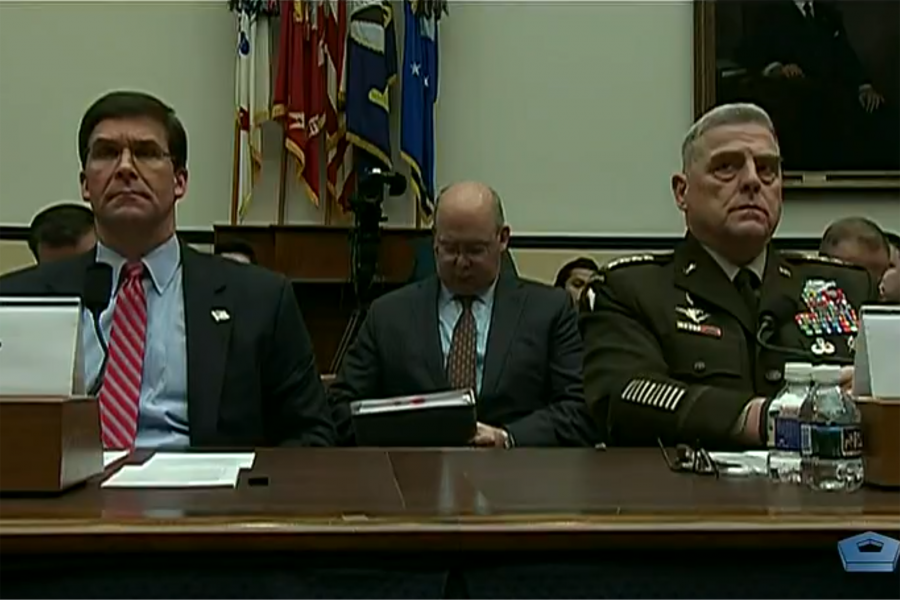The Islamic State group has not completely been pushed out of Syria and without a sustained US presence, including air surveillance and strike operations, it will re-emerge within a matter of months, the top US military uniformed official told lawmakers.
It likely will take between six and 12 months, but IS will once again become a major threat if the US leaves, Chairman of the Joint Chiefs of Staff Gen. Mark Milley said at a Dec. 11 House Armed Services Committee hearing.
There are between 500 and 600 US forces remaining in northern Syria, down from approximately 1,000 that were in the area before President Donald Trump announced he was ordering the withdrawal of forces in October, Defense Secretary Mark Esper said at the hearing.
Esper told lawmakers that despite the loss of the physical caliphate and the death of the group’s leader, IS is still an ideology that is hard to defeat. In August, Operation Inherent Resolve estimated IS still had between 14,000-18,000 members in Iraq and Syria, according to the Defense Department Inspector General.
American forces will be able to fully leave when the US has enough confidence in the fighters it has trained, “when we feel comfortable that local security and police forces are capable of handling any resurgence,” Esper said.
The October announcement of a withdrawal preceded the Turkish incursion into the region aimed at creating a 30-kilometer safe zone stretching south of the border it shares with Syria. Milley said he had recommended pulling a small number of troops co-located with Syrian Democratic Forces out of the immediate area before the incursion. But once that happened, Syrian Democratic Forces in the region shifted their focus to fighting the Turkish advance until a ceasefire was brokered and they retreated.
Milley and Esper said they coordinated with the White House before Trump’s October announcement, and that in conversations with Turkish leaders Ankara made it clear that it could not guarantee the safety of Americans in their way.
“There are 15,000 Turkish soldiers, and we had all the intelligence indicators to indicate that orders were written and sent and rehearsals were complete and they were going to attack,” Milley said. “There were 28 United States Special Forces Green Berets and I am not going to allow 28 American soldiers to be killed and slaughtered just to call somebody’s bluff.”
Since that initial, moderate withdrawal of American forces in the north, SDF fighters and US forces are still working together outside the buffer zone, Esper and Milley said. For example, US forces retain their major presence at Al-Tanf where they are protecting oil facilities in the region.
The SDF also still has “adequate control” of 24 prisons in Syria, and Milley testified he is not worried about the security of these IS fighters.
“There’s no risk I can see of mass escape,” Milley said.
However, the US does not have solid intelligence on the security of several facilities inside the Turkish-controlled area, Milley said.

